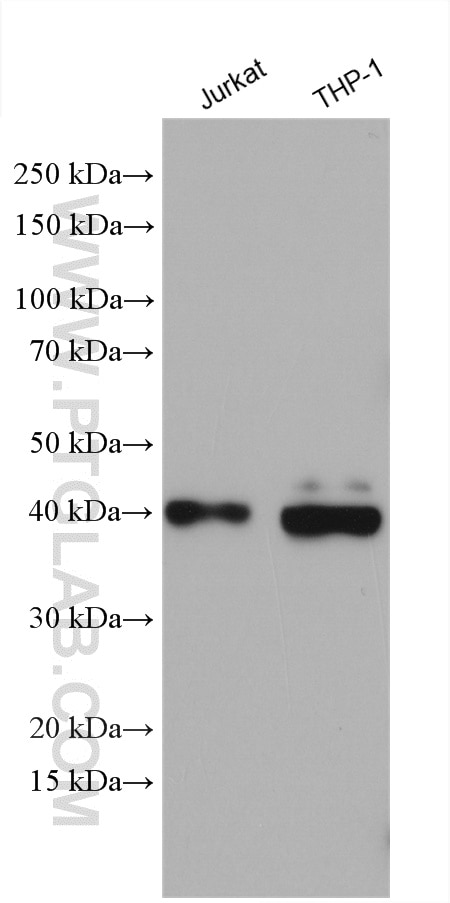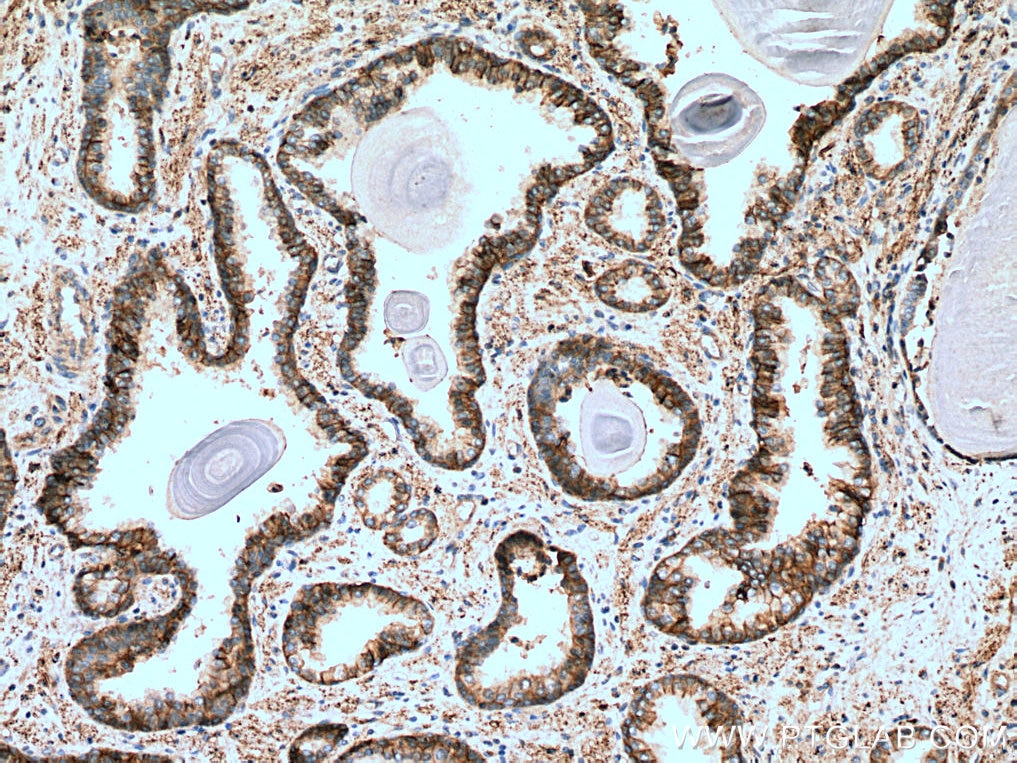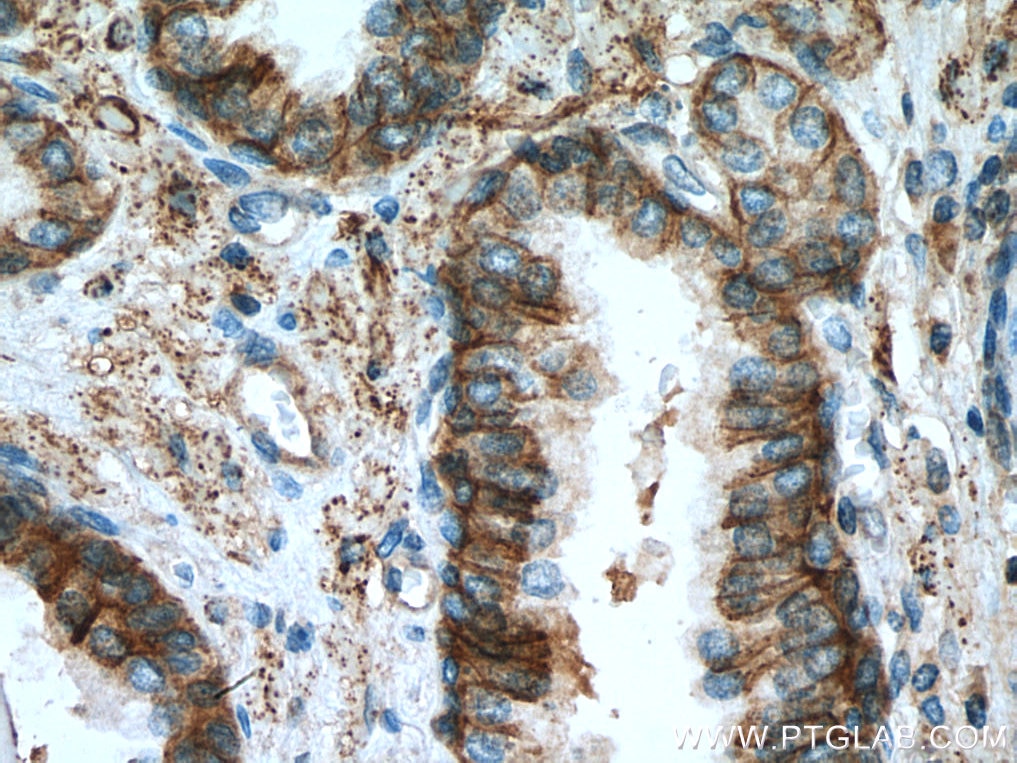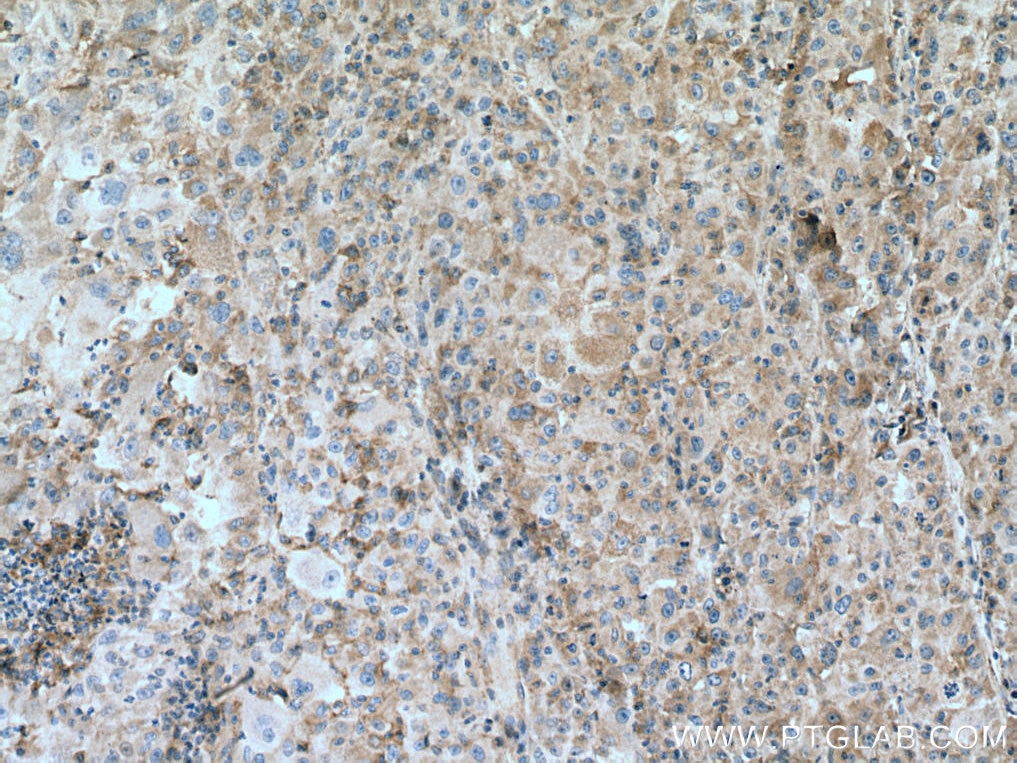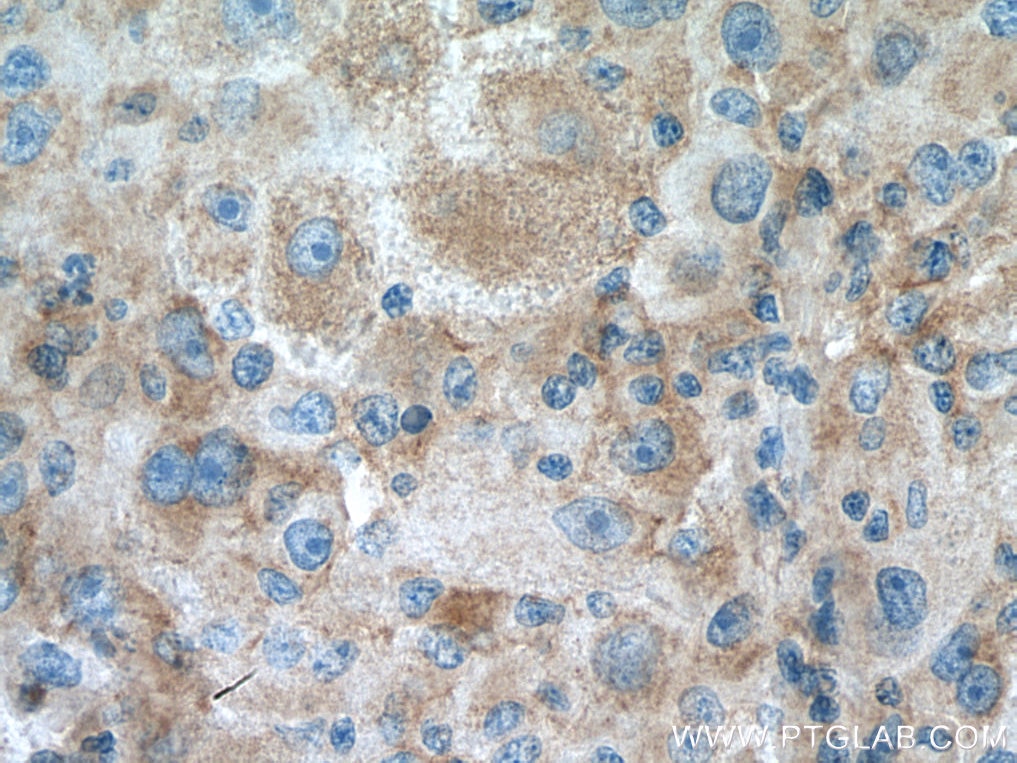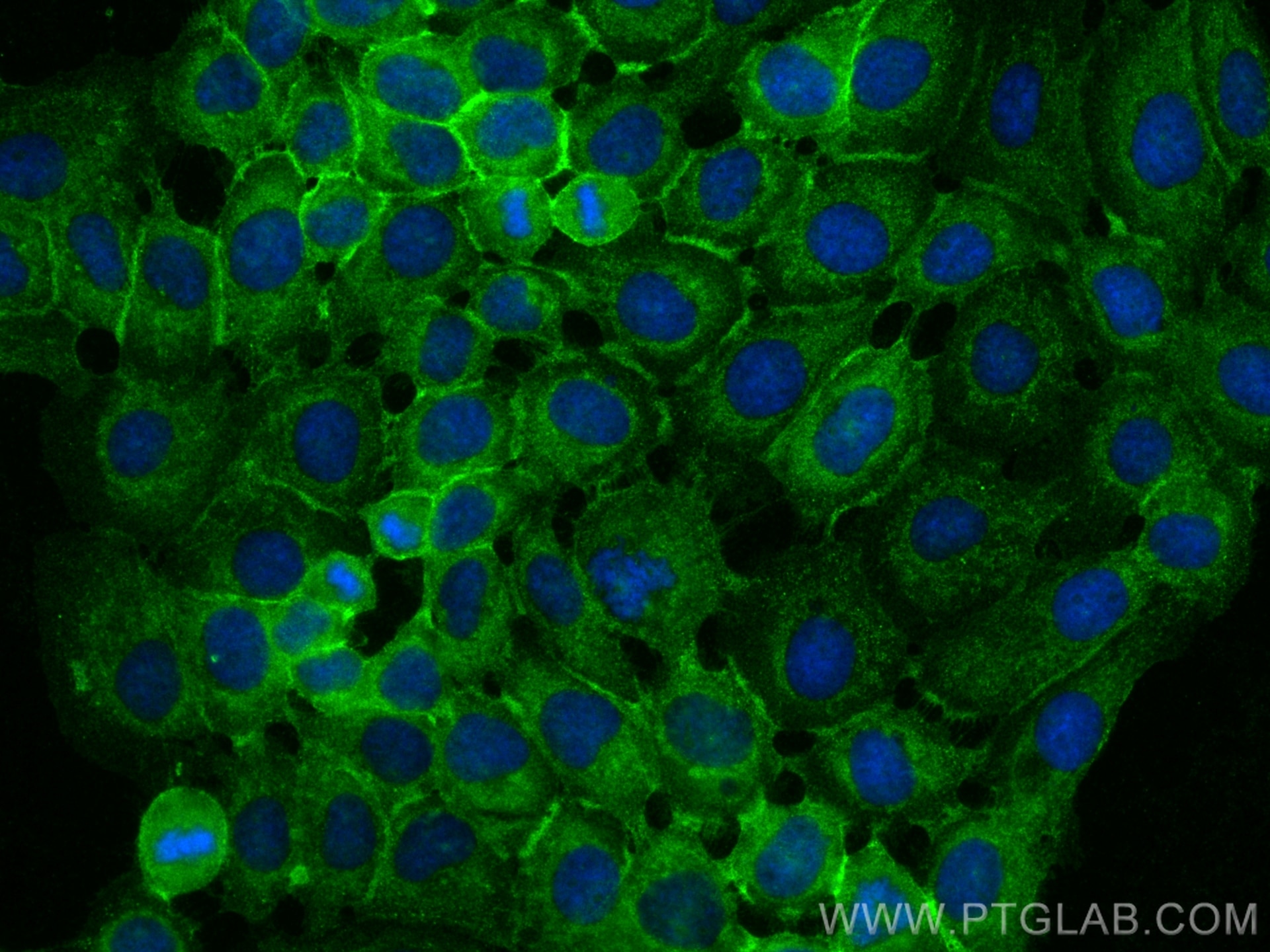Anticorps Polyclonal de lapin anti-ATP1B3
ATP1B3 Polyclonal Antibody for WB, IHC, IF/ICC, ELISA
Hôte / Isotype
Lapin / IgG
Réactivité testée
Humain
Applications
WB, IHC, IF/ICC, ELISA
Conjugaison
Non conjugué
N° de cat : 11142-1-AP
Synonymes
Galerie de données de validation
Applications testées
| Résultats positifs en WB | cellules Jurkat, cellules THP-1 |
| Résultats positifs en IHC | tissu de cancer de la prostate humain, tissu de cancer du foie humain il est suggéré de démasquer l'antigène avec un tampon de TE buffer pH 9.0; (*) À défaut, 'le démasquage de l'antigène peut être 'effectué avec un tampon citrate pH 6,0. |
| Résultats positifs en IF/ICC | cellules A431, |
Dilution recommandée
| Application | Dilution |
|---|---|
| Western Blot (WB) | WB : 1:1000-1:4000 |
| Immunohistochimie (IHC) | IHC : 1:50-1:500 |
| Immunofluorescence (IF)/ICC | IF/ICC : 1:50-1:500 |
| It is recommended that this reagent should be titrated in each testing system to obtain optimal results. | |
| Sample-dependent, check data in validation data gallery | |
Applications publiées
| WB | See 2 publications below |
Informations sur le produit
11142-1-AP cible ATP1B3 dans les applications de WB, IHC, IF/ICC, ELISA et montre une réactivité avec des échantillons Humain
| Réactivité | Humain |
| Réactivité citée | Humain |
| Hôte / Isotype | Lapin / IgG |
| Clonalité | Polyclonal |
| Type | Anticorps |
| Immunogène | ATP1B3 Protéine recombinante Ag1589 |
| Nom complet | ATPase, Na+/K+ transporting, beta 3 polypeptide |
| Masse moléculaire calculée | 32 kDa |
| Poids moléculaire observé | 32-43 kDa |
| Numéro d’acquisition GenBank | BC011835 |
| Symbole du gène | ATP1B3 |
| Identification du gène (NCBI) | 483 |
| Conjugaison | Non conjugué |
| Forme | Liquide |
| Méthode de purification | Purification par affinité contre l'antigène |
| Tampon de stockage | PBS with 0.02% sodium azide and 50% glycerol |
| Conditions de stockage | Stocker à -20°C. Stable pendant un an après l'expédition. L'aliquotage n'est pas nécessaire pour le stockage à -20oC Les 20ul contiennent 0,1% de BSA. |
Informations générales
ATP1B3 (also known as CD298) is the β3 subunit of Na+/K+-ATPase which functions to maintain sodium and potassium gradients across membranes involved in cellular activities. ATP1B3 is a glycosylated protein and there are fully and intermediately glycosylated forms of ATP1B3 in mammalian cells. The predicted MW of ATP1B3 is around 32 kDa, while various forms (38-43 kDa) can be observed due to the different level of glycosylation (PMID: 30792309, 16339171, 17176442).
Protocole
| Product Specific Protocols | |
|---|---|
| WB protocol for ATP1B3 antibody 11142-1-AP | Download protocol |
| IHC protocol for ATP1B3 antibody 11142-1-AP | Download protocol |
| IF protocol for ATP1B3 antibody 11142-1-AP | Download protocol |
| Standard Protocols | |
|---|---|
| Click here to view our Standard Protocols |
Publications
| Species | Application | Title |
|---|---|---|
Cell Rep ATP6V0D1 promotes alkaliptosis by blocking STAT3-mediated lysosomal pH homeostasis | ||
Front Oncol ATP1B3 may promote glioma proliferation and migration through MAPK/NF-KB signaling pathway |
